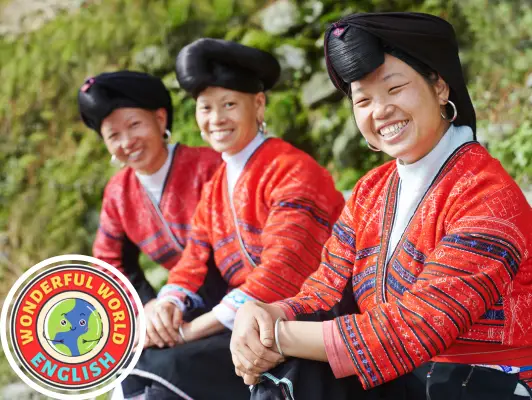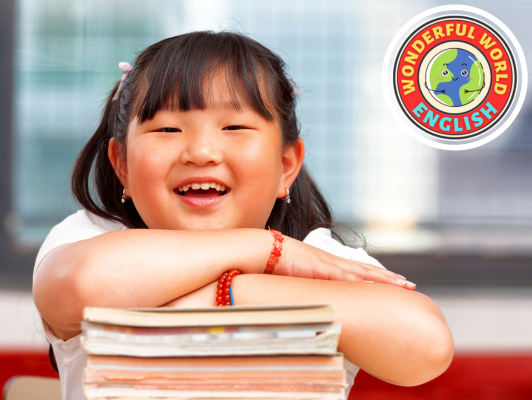Contents
Toggle
Meet David De’ Ath, founder, editor, and writer at Wonderful World English. With his extensive background as an English teacher, David provides valuable insights and practical tips on ESL for students and teachers alike.
Language learning plays a pivotal role in Chinese education, with various languages taught across different levels of schooling.
With Mandarin Chinese being the official language spoken by the vast majority of the population, it is taught uniformly throughout the country and serves as the cornerstone of linguistic education in China.
Mandarin, however, is not the only language on the curriculum in Chinese schools; English has become an increasingly important part of the educational system.
Considered a crucial foreign language, English teaching has been integrated into school programs from the primary level, reflecting the country’s emphasis on global communication and commerce.
Besides English, additional foreign languages are gaining traction within China’s educational framework, albeit to a lesser degree.
These include Japanese, Korean, Spanish, Portuguese, and Russian, reflecting a blend of geographical proximity, cultural affinity, and emerging economic relationships.
The focus on these languages is indicative of China’s strategic approach towards internationalization and fostering bilateral connections.
Simultaneously, the recognition of China’s 56 unique ethnic groups and corresponding languages underscores the diverse linguistic heritage preserved within the nation’s borders.
This diversity manifests in various regional dialects and languages that are also part of the country’s rich tapestry and, in some cases, are encouraged in local education.
Key Takeaways
- Mandarin Chinese and English are core components of China’s language education.
- A selection of other foreign languages is taught, revealing China’s international outlook.
- China’s multicultural landscape informs its educational policy on regional languages.
Languages of China
China’s linguistic landscape is as vast and complex as its geography, weaving together a rich tapestry of languages and dialects.
With over a billion speakers, various forms of Chinese have developed regionally, showcasing both the country’s cultural diversity and historical depth.
Mandarin Chinese and Its Varieties
Mandarin Chinese, also known as Standard Mandarin or Putonghua, emerges as the official language of China, primarily based on the Beijing dialect.
As the most commonly spoken language in Northern China, Mandarin boasts several dialects across regions.
Simplified Chinese characters are used in mainland China and Singapore, while Traditional Chinese characters are preferred in Taiwan, Hong Kong, and Macau.
Regional Languages and Dialects
Apart from Mandarin, China houses a plethora of regional languages and dialects, often classified into seven main Chinese language families: Gan, Hakka, Wu, Xiang, Yue (Cantonese), Min, and Jin.
Each language family further diverges into various dialects like the Suzhou dialect of Wu or the Shanghainese.
Variants like Southern Min and Hokkien are prevalent in Fujian and Taiwan, while Yue, particularly Cantonese, continues to hold significant cultural importance in Guangdong, Hong Kong, and Macau.
Minority and Indigenous Languages
In addition to Chinese dialects, there are numerous minority and indigenous languages, thanks to the presence of 56 officially recognized ethnic groups.
This includes languages from different linguistic families like the Sino-Tibetan family, Tibeto-Burman languages such as Tibetan and Yi, and the Mongolic, Tungusic, and Turkic families with languages like Mongolian, Dongxiang, and Uyghur.
In regions such as Guangxi and Yunnan, languages from the Tai family, including Zhuang, are spoken, while the Hui people primarily communicate in Huizhou Chinese.
Furthermore, autonomous regions like Inner Mongolia, Tibet, and Xinjiang foster distinctive linguistic ecosystems.

Education and Foreign Languages
In China, the educational system emphasizes the teaching of Mandarin as the official language, while English occupies a significant position as the primary foreign language.
Educational policies play an integral role in shaping language instruction across different levels of schooling.
Primary Education and Language Policy
Mandarin, commonly known as Standard Chinese, is the cornerstone of language education in China.
As the official language, it is taught from the early stages of primary education.
The government’s language policy ensures that Mandarin is the medium of instruction in schools across the country, including regions like Hong Kong, Macau, and Taiwan, where other dialects or languages have a strong presence.
In addition to Mandarin, English is introduced as a second language at an early age in many schools.
It is regarded as a critical linguistic skill, often seen as a bridge to the global community, making it a key component of the education system.
The significance of English as a lingua franca is reflected in its prominent position in standardized tests and university entrance exams.
Foreign Languages in Chinese Education
The landscape of foreign language education in China is diverse, with several languages taught across various educational levels.
After English, languages such as French, Russian, German, Spanish, and Portuguese are also offered in schools, particularly at the secondary level and in universities.
These languages are often chosen due to historical ties, cultural exchanges, and economic relationships between China and regions in Europe and beyond.
Singapore and Malaysia influence the regional language education policies due to their significant Chinese-speaking populations and the use of Mandarin in official capacities.
Consequently, Mandarin’s importance is recognized within China’s borders and broader Southeast Asian educational and linguistic policy discussions.
Foreign language education extends beyond the standard curriculum.
Special programs and schools are dedicated to intensive foreign language training to prepare students for careers in international trade, diplomacy, and other global fields.
As China continues to expand its international presence, proficiency in multiple languages becomes increasingly valuable.
For more insights into what subjects are taught in China, check out the link below!
Related: What Subjects Are Taught in China? (An Overview)

Conclusion
In conclusion, the linguistic landscape of education in China is a testament to its rich cultural diversity and strategic global positioning.
While Mandarin Chinese remains the bedrock of language instruction, reflecting China’s commitment to national unity and cultural heritage, the inclusion of English and other foreign languages in the curriculum underscores China’s recognition of the importance of global communication and international relations.
The teaching of languages like Japanese, Korean, Spanish, Portuguese, and Russian alongside regional dialects and minority languages illustrates China’s multifaceted approach to education, aiming to foster multilingual competencies among its students.
This approach not only equips students with the necessary tools for global engagement but also preserves the linguistic diversity intrinsic to China’s identity.
As China continues to evolve on the international stage, its education policies, particularly concerning language instruction, serve as a bridge to the world and a reflection of its internal mosaic of cultures and ethnicities.
For educators and students alike, China’s dynamic multilingual education landscape offers a unique and enriching experience, opening doors to cross-cultural understanding and global opportunities.
We hope you find value in this information.
Have a wonderful day!
Image Attribution: All images licensed via canva.com





